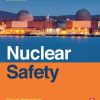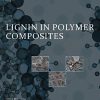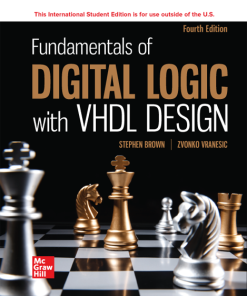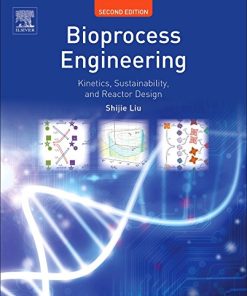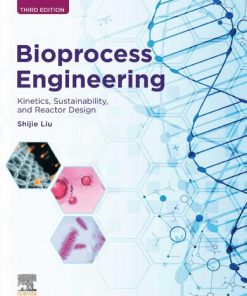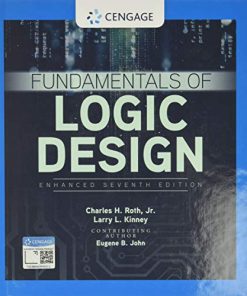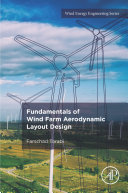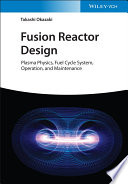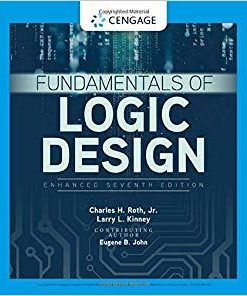Fundamentals of Magnetic Thermonuclear Reactor 1st edition by Design Filatov 0081024713 9780081024713
$50.00 Original price was: $50.00.$25.00Current price is: $25.00.
Fundamentals of Magnetic Thermonuclear Reactor 1st edition by Design Filatov – Ebook PDF Instant Download/DeliveryISBN: 0081024713, 9780081024713
Full download Fundamentals of Magnetic Thermonuclear Reactor 1st edition after payment.

Product details:
ISBN-10 : 0081024713
ISBN-13 : 9780081024713
Author: Design Filatov
Fundamentals of Magnetic Thermonuclear Reactor Design is a comprehensive resource on fusion technology and energy systems written by renowned scientists and engineers from the Russian nuclear industry. It brings together a wealth of invaluable experience and knowledge on controlled thermonuclear fusion (CTF) facilities with magnetic plasma confinement – from the first semi-commercial tokamak T-3, to the multi-billion international experimental thermonuclear reactor ITER, now in construction in France. As the INTOR and ITER projects have made an immense contribution in the past few decades, this book focuses on its practical engineering aspects and the basics of technical physics and electrical engineering.
Fundamentals of Magnetic Thermonuclear Reactor 1st Table of contents:
Chapter 1 – Engineering and Physical Principles of the Magnetic Fusion Reactor Operation
1.1 – Introduction
1.2 – Physical Basis of Fusion Power Engineering
1.3 – Basic Correlations
References
Chapter 2 – Facilities With Magnetic Plasma Confinement
2.1 – Introduction
2.2 – Overview
2.2.1 – Tokamaks
2.2.2 – Stellarators
2.2.3 – Magnetic Mirrors
2.2.4 – Hybrid Systems
2.2.5 – Pinches
2.2.6 – Spheromaks
2.3 – Structure and Typical Parameters of Tokamak Reactors
2.4 – Physical and Engineering Limitations for Parameter Selection
2.5 – Engineering Requirements to Main Functional Systems
2.5.1 – Magnet System
2.5.2 – In-Chamber Conditions: Breakdown
2.5.3 – Force Loads on Tokamak Components
2.5.4 – Fuel Cycle: Demand for Tritium
2.5.5 – Radiation Shielding
2.6 – Stellarators
2.6.1 – Functional Layout and Key Characteristics
2.6.2 – Research Facilities
2.6.3 – Stellarator Fusion Reactor
References
Chapter 3 – ITER – International Thermonuclear Experimental Reactor
3.1 – Introduction
3.2 – ITER Reactor Configuration and Main Characteristics
3.3 – Magnet System
3.3.1 – Toroidal Field Coils
3.3.2 – Poloidal Field Coils
3.3.3 – Central Solenoid and Correction Coils
3.4 – Vacuum Vessel
3.5 – In-vessel Components
3.5.1 – First-Wall Panels
3.5.2 – Divertor
3.6 – Thermal Shields
3.7 – Cryostat
3.8 – Reactor Assembly
Appendix A.3.1 Quality Assurance Programme for Reactor Design
References
Chapter 4 – Simulation of Electromagnetic Fields
4.1 – Introduction
4.2 – Stationary and Quasi-stationary Fields
4.3 – Stationary Field Analysis and Synthesis
4.3.1 – Stationary Field Analysis
4.3.2 – Stationary Field Synthesis
4.3.3 – Ripple of the Tokamak Toroidal Field
4.4 – Analysis of Electromagnetic Transients
4.4.1 – Calculation and Methodological Basics
4.4.2 – Sources of Transient Fields
4.4.3 – Global Computational Models Based on Conducting Shells
4.4.4 – 3D Computational Models
4.4.5 – Computation of Potentials: Global and Local Model Integration
Appendix A.4.1 Example of How to Synthesise a Ferromagnetic Insert
Appendix A.4.2 Examples of FE Meshing of Conducting Shell Models for ITER Components
Appendix A.4.3 Examples of 3D FE Meshes for Massive Conducting Structures of ITER
References
Chapter 5 – Superconducting Magnet Systems
5.1 – Introduction
5.2 – Superconducting Magnet Systems of Electrophysical Facilities
5.2.1 – Summary Characteristics of Superconducting Magnets
5.2.2 – ITER Magnets
5.3 – Physical and Mechanical Properties of Superconductors
5.3.1 – Flux Pinning
5.3.2 – Critical Characteristics
5.3.3 – Intrinsic Stabilisation
5.4 – Winding Superconductors
5.4.1 – Normal Phase Effect
5.4.2 – Forced-Flow Cooled Superconducting Cables
5.4.3 – Basic Superconducting Strands
5.4.4 – Superconducting Coil Cable Manufacturing Processes
5.5 – Modelling of the ITER Magnet System
5.5.1 – International Model Coil Program
5.5.2 – Toroidal Field Model Coil
5.5.3 – Model Insert Coils
5.5.4 – Main Simulation and Testing Results
Appendix A.5.1 Thermal–Hydraulic Simulations of ITER Superconducting Magnets at Normal and Off-Nor
A.5.1.1 Venecia Basic Models and Modelling Technique
A.5.1.2 Validation of Vincenta/Venecia Models for Thermal–Hydraulic Analysis of SC Magnets and The
A.5.1.2.1 Central Solenoid Model Coil
A.5.1.2.2 Simulations Versus Experiments
A.5.1.3 Thermal–Hydraulic Models of ITER Magnets
A.5.1.3.1 Toroidal Field Magnet Model
A.5.1.3.2 Central Solenoid Model
A.5.1.3.3 Model of PF Magnet System
A.5.1.4 Mitigation of Pulsed Heat Loads
References
Chapter 6 – Vacuum and Tritium System
6.1 – Introduction
6.2 – Physical Processes in the Vacuum Chamber
6.3 – Plasma Impact on the First Wall
6.4 – Plasma Impurity Control
6.4.1 – Sources of Impurities
6.4.2 – Impurity Control Methods: The Magnetic Divertor
6.5 – Design Evaluation of Vacuum Parameters
6.6 – Vacuum Equipment and Processes
6.6.1 – Vacuum System Key Components
6.6.2 – Vacuum Boundary of Reactor
6.6.2.1 – Dual Functionality FW Design Concept
6.6.2.2 – Separate Functionality FW Design Concept
6.6.3 – Vacuum Pumping Duct Design
6.6.4 – Wall Cleaning and Conditioning
6.6.5 – Vacuum Pumping Equipment
6.7 – Mathematical Simulation of High-Vacuum Systems
References
Chapter 7 – First Wall Components
7.1 – Introduction
7.2 – First-Wall Design Principles
7.2.1 – Design Algorithm
7.2.2 – Initial Stage Design
7.2.3 – Estimation of the Engineering and Physical Characteristics of the First-Wall Components
7.2.3.1 – Heat Load Estimation
7.2.3.2 – Determination of Coolant’s Parameters
7.2.3.3 – Material Selection
7.2.3.4 – Estimation of the First-Wall Thickness and Temperature Field
7.2.3.5 – Armour Erosion Lifetime
7.2.3.6 – Strength and Fatigue Lifetime
7.3 – ITER First Wall
7.3.1 – First-Wall Components
7.3.2 – Component Modelling: Technological and Testing Facilities
7.3.3 – Prevention of Destructive Events
7.4 – Next-Generation Reactor First Wall
7.4.1 – Challenges
7.4.2 – Possible Engineering and Physical Solutions
7.5 – Alternative Uses of First-Wall Technologies
References
Chapter 8 – Plasma Control System
8.1 – Introduction
8.2 – Scope of the Control System Design Problem
8.3 – Basic Design Methodology
8.4 – Mathematical Modelling of Electromagnetic Processes
8.4.1 – Derivation of Linear Models
8.4.2 – Non-linear Modelling
8.5 – Analytical Synthesis and Control System Optimisation
8.5.1 – Basic Concept
8.5.2 – Problem Generalisation
8.6 – Plasma Start-Up Phase
8.6.1 – Dynamics of Tokamak Electromagnetic Processes
8.6.2 – Plasma Transport Model at Start-Up Phase
8.7 – Correction of Error Fields
8.7.1 – Effect of Error Fields on Plasma Processes
8.7.2 – Field Perturbation Harmonic Analysis
8.7.3 – ITER Correction Coils
8.8 – Plasma Column Position and Shape Reconstruction Based on Magnetic Measurements
8.8.1 – Basic Principles
8.8.2 – Reconstruction Methods
References
Chapter 9 – Plasma Heating Systems
9.1 – Introduction
9.2 – Ohmic Heating
9.3 – Additional Heating Methods
9.3.1 – Neutral Beam (NB) Injection
9.3.2 – Electron Cyclotron Resonance Heating
9.3.3 – Ion Cyclotron Resonance Heating
9.3.4 – Lower Hybrid Resonance Heating
References
Chapter 10 – Blanket
10.1 – Introduction
10.2 – Key Functions and Resulting Performance Requirements
10.3 – Blanket Design Algorithm
10.4 – Blanket Designs for Demonstration and Commercial Reactors
10.4.1 – Gen-1 Blankets
10.4.2 – Prospective Blanket Concepts
10.5 – ITER Test Blanket Modules
10.5.1 – Purpose and Objectives of the Test Modules
10.5.2 – Characteristics of Test Blanket Modules
10.6 – Blanket Design Problems
References
Chapter 11 – Power Supply Systems
11.1 – Introduction
11.2 – Power Supply for Toroidal Field Coils
11.2.1 – Resistive Coils
11.2.2 – Superconducting Coils
11.2.3 – ITER Toroidal Field Coil Power Supply
11.3 – Poloidal Field Coil Power Supply
11.3.1 – Central Solenoid Coils
11.3.2 – Plasma Equilibrium Control Coils
11.3.3 – ITER Poloidal Field Coil Power Supply
11.4 – Switching Equipment
11.4.1 – Switching Equipment for Experimental Facilities
11.4.2 – ITER Switching Equipment
References
Chapter 12 – Mechanics of Magnetic Fusion Reactors
12.1 – Introduction
12.2 – Tokamak Superconducting Magnet: Load Schemes
12.2.1 – System of Toroidal Field Coils
12.2.2 – Poloidal Field Coils and Central Solenoid
12.2.3 – General Algorithm for Design and Computation
12.3 – Computations for Composite Windings
12.4 – Stress–Strain State of Tokamak Load-Bearing Structures
12.4.1 – Global and Local Computational Models
12.4.2 – Reaction to Off-Normal Current Combinations in Windings
12.4.3 – Accident Scenarios
12.4.4 – Thermal Mechanics of Superconducting Magnet Systems
12.5 – Magneto-Elastic Stability
12.5.1 – Problem Statement
12.5.2 – Stability of Toroidal and Poloidal Field Systems
12.6 – Strength and Stiffness Analysis of a Vacuum Vessel
12.6.1 – Mechanical Loads
12.6.2 – Strength and Life-Time
12.7 – Stellarator Structural Analysis
Appendix A.12.1 – Magneto-elastic Stability of ITER Poloidal Field Coil System
Appendix A.12.2 – Poloidal Field Coil Magneto-elastic Stability Under the Action of Tokamak Toroidal
Appendix A.12.3 – Physical Simulation of ITER Toroidal Field Coil
Appendix A.12.4 – Codes and Standards for Tokamaks
References
Chapter 13 – Structural and Functional Materials: Selection Criteria and Radiation Characteristics
13.1 – Introduction
13.2 – Selection Criteria
13.3 – Comparative Characteristics of Different Materials
13.4 – Plasma-Facing Materials
13.4.1 – Beryllium Alloys
13.5 – Heat-Conductive Materials
13.5.1 – High-Strength Copper Alloys
13.5.2 – Radiation Characteristics of Copper Alloys
13.5.2.1 – Transmutation Processes
13.5.3 – Recovery of Properties of Irradiated Copper Alloys
13.5.3.1 – Single-Stage Annealing
13.5.3.2 – Irradiation–Annealing–Irradiation Cycle
13.6 – Materials for the Vacuum Chamber and Supports
References
Chapter 14 – Safety of Fusion Reactors
14.1 – Introducton
14.2 – Fusion Reactor as a Radiation Safety Object
14.3 – Philosophy of the Magnetic Fusion Reactor Safe Operation
14.3.1 – Basic Concepts
14.3.2 – Radiation Protection Principles
14.3.3 – Radiation Safety Functions
14.3.4 – Radioactive Waste, Reactor Decommissioning
14.4 – ITER Design Solutions for Radiation Safety
14.4.1 – Design Principles for ITER Radiation Safety
14.4.2 – ITER Normal Operation
14.4.3 – ITER Safety Analysis for Normal and Off-Normal Situations
14.4.4 – Conclusions
People also search for Fundamentals of Magnetic Thermonuclear Reactor 1st:
what is a thermonuclear reactor
how to build a thermonuclear reactor
fundamentals of nuclear reactor physics
fundamentals of nuclear reactor physics pdf
fundamentals of magnetism pdf
Tags: Fundamentals, Magnetic, Thermonuclear Reactor, Design Filatov
You may also like…
Housekeeping & Leisure - Handicraft: Cutting and Sewing
Engineering - Electrical & Electronic Engineering
Fundamentals of Digital Logic with VHDL Design 4th Edition by Brown 1260597784 978-1260597783
Computers - Applications & Software
Fundamentals of IoT and Wearable Technology Design 1st Edition Haider Raad
Biology and other natural sciences
Bioprocess Engineering: Kinetics, Sustainability, and Reactor Design 2nd Edition Shijie Liu
Biology and other natural sciences - Biotechnology
Bioprocess Engineering: Kinetics, Sustainability, and Reactor Design 3rd Edition Shijie Liu
Engineering - Electrical & Electronic Engineering
Fundamentals of Logic Design, Enhanced Edition 7th Edition Jr. Charles H. Roth
Engineering - Mechanical Engineering & Dynamics
Fundamentals of Wind Farm Aerodynamic Layout Design Farschad Torabi
Physics - Nuclear


